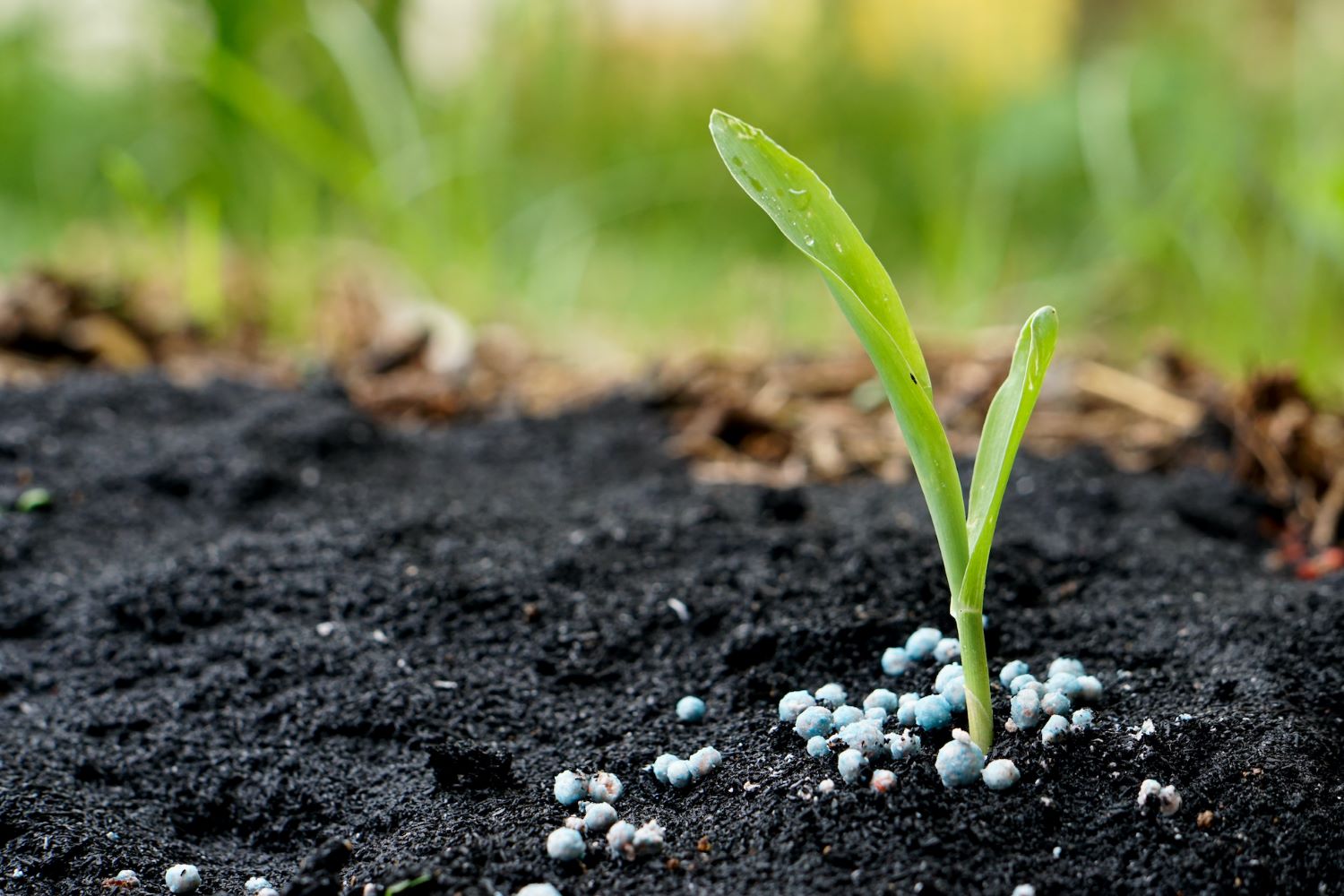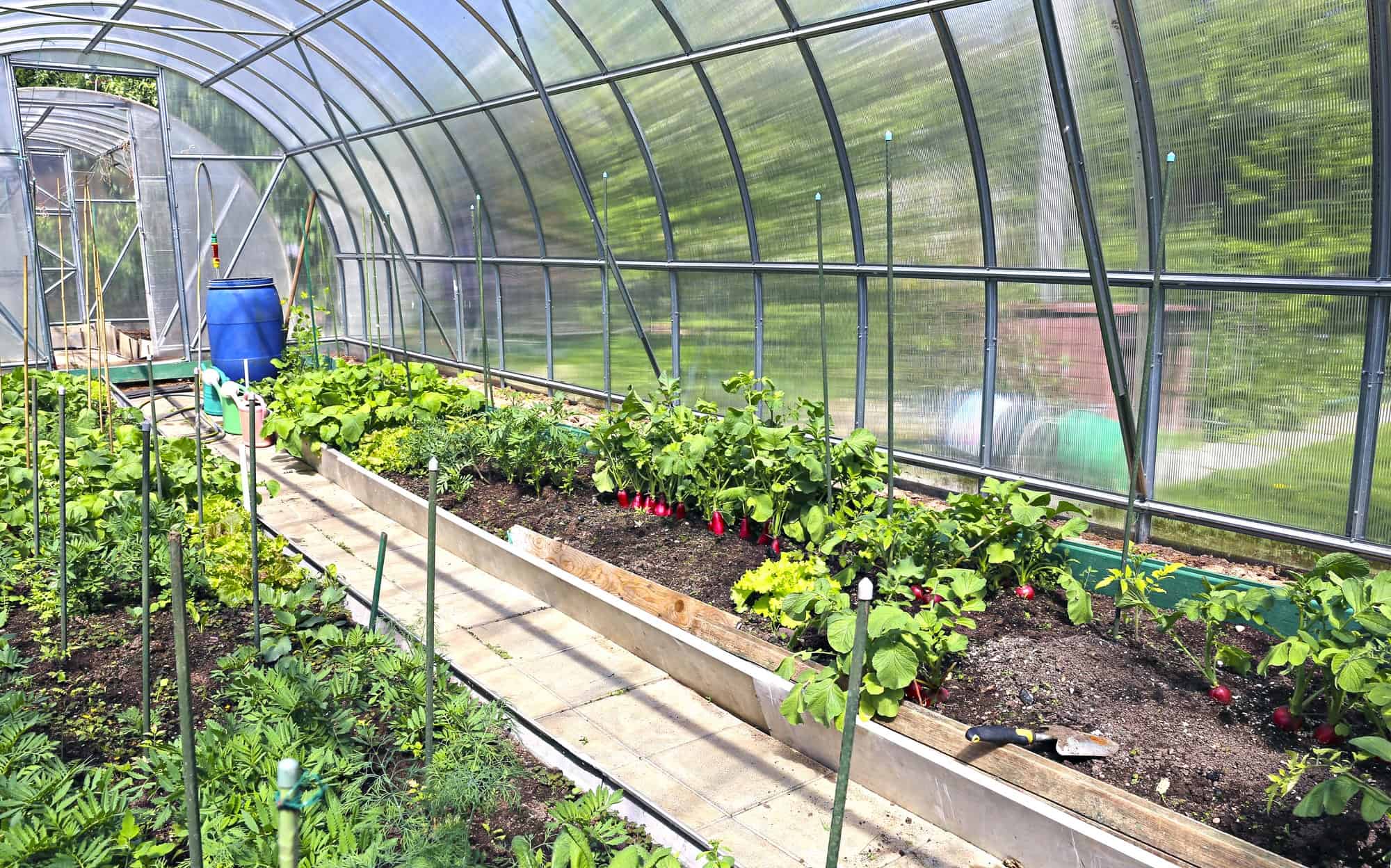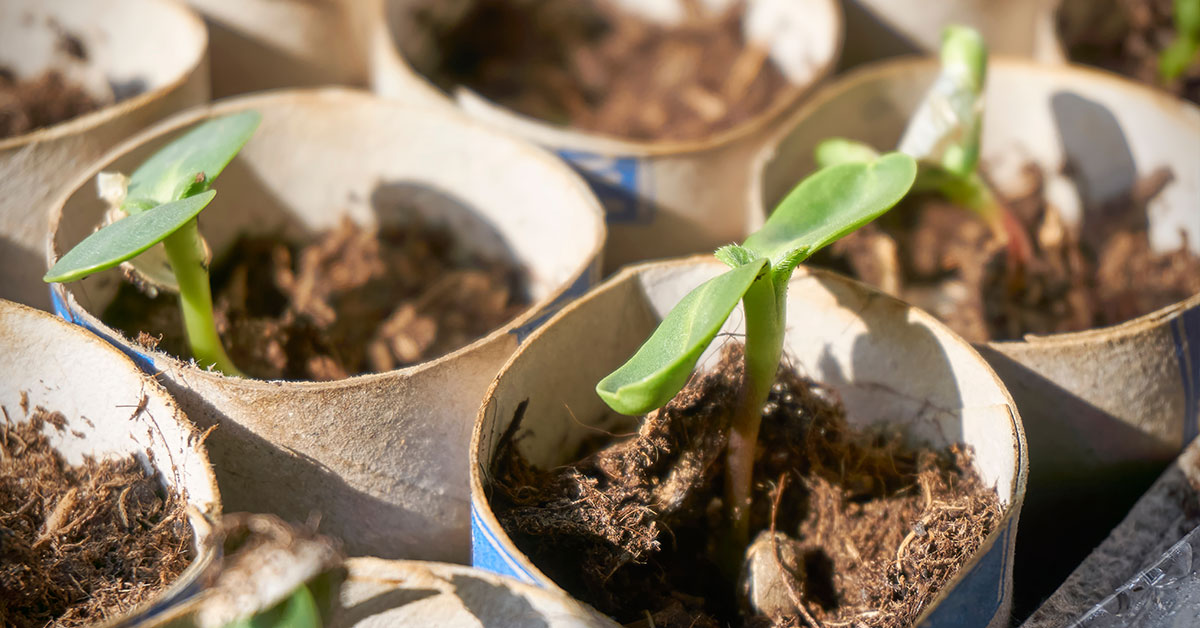Home>Gardening Tips and Tricks>Problem Solving>How Long Does It Take For Bell Pepper Seeds To Germinate


Problem Solving
How Long Does It Take For Bell Pepper Seeds To Germinate
Modified: February 9, 2024
Discover effective ways to solve the problem of slow bell pepper seed germination. Find out how long it usually takes for bell pepper seeds to germinate and what you can do to speed up the process.
(Many of the links in this article redirect to a specific reviewed product. Your purchase of these products through affiliate links helps to generate commission for Chicagolandgardening.com, at no extra cost. Learn more)
Table of Contents
Introduction
When it comes to growing bell peppers from seeds, one of the key factors to consider is the germination process. Germination is the first step in the growth of a bell pepper plant, where the seed transforms into a seedling and begins to emerge from the soil. Understanding the factors that affect bell pepper seed germination and knowing the optimal conditions for successful germination can significantly increase your chances of a bountiful harvest.
Bell peppers, also known as sweet peppers or capsicums, are a popular vegetable in many cuisines due to their vibrant colors, crisp texture, and sweet flavor. Whether you want to start your own pepper garden or grow them in containers, knowing how long it takes for bell pepper seeds to germinate is essential for planning and proper care. The germination time can vary depending on various factors, including seed quality, environmental conditions, and the specific variety of bell pepper you’re growing.
In this article, we will explore the factors that affect bell pepper seed germination and discuss the optimal conditions for successful germination. We will also provide guidance on preparing bell pepper seeds for germination, troubleshooting germination issues, and more. By the end of this article, you will have a solid understanding of the germination process and be equipped with the knowledge to grow healthy and thriving bell pepper plants.
Factors Affecting Bell Pepper Seed Germination
Several factors can influence the germination of bell pepper seeds. Understanding these factors will help you create the ideal conditions for successful germination and ensure the best possible start for your bell pepper plants. Here are some key factors to consider:
- Seed quality: The quality of the seed plays a significant role in germination success. It’s important to purchase high-quality seeds from reputable sources. Fresh seeds with high viability will have a greater chance of germinating and producing healthy plants.
- Temperature: Bell pepper seeds require warm soil temperatures for germination. The optimum temperature range for germination is between 75°F (24°C) and 85°F (29°C). Cooler temperatures can significantly delay germination or even inhibit it altogether. Using a heating mat or placing the seeds in a warm and sunny location can help maintain the ideal temperature for germination.
- Moisture: Adequate moisture is essential for bell pepper seed germination. The soil should be moist but not waterlogged. Sowing the seeds in well-draining soil and misting the soil with water can help maintain the proper moisture level. Be careful not to overwater, as excess moisture can lead to rot or fungal diseases.
- Light: Unlike some other plants, bell pepper seeds do not require light to germinate. In fact, they prefer to germinate in darkness. Therefore, it’s recommended to cover the seeds with a thin layer of soil or a plastic cover to exclude light during the germination process.
- Air circulation: Proper air circulation is crucial for preventing the development of fungal diseases during germination. Ensure that the planting containers or trays have adequate drainage holes to allow excess moisture to escape and promote air circulation around the seeds.
By paying attention to these factors and providing the optimal conditions, you can significantly improve the germination rate of your bell pepper seeds. Creating a favorable environment will give your seeds the best chance of sprouting and developing into healthy seedlings. Remember to monitor the conditions throughout the germination period to ensure they remain within the desired range.
Optimal Conditions for Bell Pepper Seed Germination
Creating the optimal conditions for bell pepper seed germination is crucial for successful and timely sprouting. By providing the following conditions, you can maximize the germination rate and set your bell pepper seeds up for success:
- Temperature: Bell pepper seeds germinate best in warm soil temperatures. Aim for a temperature range of 75°F (24°C) to 85°F (29°C). You can use a seedling heat mat or place the seeds in a warm area, such as on top of the refrigerator or near a heat source, to maintain the desired temperature throughout the germination process.
- Moisture: Proper moisture is essential for bell pepper seed germination. The soil should be evenly moist, but not overly saturated. Before sowing the seeds, ensure that the soil is well-draining to prevent waterlogging. Mist the soil with water regularly to maintain the moisture level, but avoid overwatering, as it can lead to rotting or fungal diseases.
- Light: Bell pepper seeds prefer to germinate in darkness, so it’s important to cover them with a thin layer of soil or a plastic cover. However, once the seedlings have emerged from the soil, they require bright light to grow. Place the trays or pots in a sunny location or provide supplemental light using grow lights to ensure healthy seedling development.
- Soil: Choosing the right soil is vital for bell pepper seed germination. Use a well-draining, sterile potting mix that is rich in organic matter. This will provide the necessary nutrients and support for the developing seedlings. Avoid using heavy garden soil, as it can retain excess moisture and hinder germination.
- Air circulation: Good air circulation is crucial for preventing the growth of mold and fungal diseases. Ensure that the containers or trays have adequate drainage holes to allow excess moisture to escape and promote airflow. You can also use a small fan to gently circulate the air around the seedlings.
By carefully controlling the temperature, moisture, light, soil, and air circulation, you can create the optimal conditions for bell pepper seed germination. Consistently monitoring and maintaining these conditions will result in a higher germination rate and healthier seedlings. Remember to provide the ideal conditions until the seedlings have established themselves and are ready for transplanting.
Preparing Bell Pepper Seeds for Germination
Properly preparing bell pepper seeds for germination is an important step in ensuring successful seedling emergence. By following these steps, you can optimize the seed’s potential for germination:
- Seed selection: Start by selecting high-quality bell pepper seeds from a reputable source or saved seeds from a previous harvest. Look for seeds that are plump, firm, and free from any signs of damage or pests. Avoid using old or discolored seeds, as their viability may be compromised.
- Seed treatment: While not necessary, some gardeners opt to give bell pepper seeds a head start by pre-soaking them in tepid water overnight, or for about 8-12 hours. This can help soften the seed coat and promote faster germination. After soaking, gently pat the seeds dry using a paper towel before sowing them.
- Scarification: Bell pepper seeds have thick seed coats that can sometimes inhibit germination. To overcome this, you can manually thin the seed coat by lightly scratching or nicking the seed with a sharp knife or sandpaper. This process, known as scarification, allows water to penetrate the seed coat, speeding up germination.
- Stratification (optional): Some bell pepper varieties benefit from a period of cold stratification, especially if you’re sowing them in late winter or early spring. Place the seeds in a damp paper towel or a plastic bag with moistened peat moss, vermiculite, or sand and refrigerate them for 1-2 weeks. This mimics the natural winter dormancy that some pepper varieties require for optimal germination.
- Sowing: Fill seedling trays or containers with well-draining potting mix. Make small indentations about ¼ inch deep in the soil and place 2-3 seeds in each indentation. Cover the seeds with a thin layer of soil and gently press it down. Water the soil gently to ensure the seeds are moistened but not soaked.
By following these steps to prepare your bell pepper seeds before sowing, you can increase their chances of germination success. Soaking, scarification, and stratification are optional techniques that can help overcome seed dormancy or improve germination rates. When sowing the seeds, ensure they are properly positioned in the soil to provide them with the best environment for emergence.
Germination Time for Bell Pepper Seeds
The germination time for bell pepper seeds can vary depending on several factors, including the quality of the seeds, environmental conditions, and the specific variety being grown. On average, bell pepper seeds take anywhere from 7 to 14 days to germinate.
It’s important to note that bell pepper seeds are known for their slower germination compared to some other seeds. Patience is key when waiting for them to sprout. The germination process begins with the swelling of the seed followed by the emergence of the seedling from the soil.
Factors such as temperature and moisture play a crucial role in determining the germination time. Seeds kept at an optimal temperature range of 75°F (24°C) to 85°F (29°C) tend to germinate more quickly. Likewise, maintaining the proper moisture level during germination is essential for promoting seed activation and sprouting. Ensure the soil remains consistently moist but not overly saturated.
It’s important to regularly monitor the soil moisture, temperature, and the progress of the seedlings during the germination period. If you notice any signs of fungal disease, such as damping-off, adjust the moisture and airflow to prevent further damage to the seeds or emerging seedlings.
Some bell pepper varieties may have different germination times. For example, sweet bell pepper varieties generally have a germination period of 10 to 14 days, while hot pepper varieties, such as jalapeño or habanero, may take slightly longer to germinate.
Remember that germination is not always uniform. Some seeds may sprout quicker than others, resulting in uneven emergence. To ensure a higher success rate, it’s common to sow multiple seeds in each planting location. Once the seedlings have emerged, they can be thinned out, leaving only the strongest ones to grow.
By understanding the average germination time for bell pepper seeds and providing the ideal conditions, you can anticipate when your seeds are likely to sprout and plan accordingly for the next steps in their growth journey.
Troubleshooting Germination Issues
Germination issues can occur even with the best of intentions and efforts. If you encounter any problems during the germination process of bell pepper seeds, there are several troubleshooting steps you can take to improve the situation. Here are some common issues and their potential solutions:
- Poor germination: If you notice a low germination rate or no germination at all, it could be due to factors such as old or low-quality seeds, incorrect temperature, inadequate moisture, or poor soil conditions. Start by checking the viability of your seeds by performing a germination test before planting. Ensure that the temperature and moisture are within the optimal ranges mentioned earlier. Consider using fresh seeds from a reputable source if necessary.
- Damping-off: Damping-off is a fungal disease that affects young seedlings, causing them to wilt and collapse. It is often caused by overly moist conditions and poor air circulation. To prevent damping-off, make sure the soil is well-draining, water the plants carefully to avoid overwatering, and provide adequate ventilation by using a small fan or by spacing out the seedlings.
- Mold or fungal growth: Excessive moisture and poor air circulation can lead to the growth of mold or fungal diseases on the soil surface or around the emerging seedlings. To address this issue, improve air circulation by using a fan, reduce watering frequency, and avoid overcrowding the seedlings. Additionally, you can gently remove any visible mold or fungus by carefully scraping it off the soil surface with a sterile tool.
- Seedling legginess: Leggy seedlings are elongated and weak, with insufficient support to stand upright. This condition is often caused by insufficient light. To prevent legginess, ensure that the seedlings are receiving adequate light. If growing indoors, use supplemental grow lights to provide sufficient brightness. Position the lights close to the seedlings and adjust their height as the plants grow to keep them compact and sturdy.
- Poor seedling development: If the seedlings appear weak, pale, or stunted, it may indicate a lack of essential nutrients. To overcome this, feed the seedlings with a diluted, balanced fertilizer once they have developed their first true leaves. This will provide them with the necessary nutrients for healthy growth. Be cautious not to over-fertilize, as this can lead to burns or other nutrient imbalances.
Remember that troubleshooting germination issues requires patience, observation, and timely intervention. By addressing these common problems promptly, you can help the bell pepper seedlings recover and increase their chances of thriving throughout their growth cycle.
Conclusion
Growing bell peppers from seeds requires careful attention to the germination process. By understanding the factors that affect bell pepper seed germination and providing optimal conditions, you can significantly increase the chances of successful germination and healthy seedling development. Remember that each bell pepper variety may have its own specific requirements, so it’s essential to research and cater to their individual needs.
Factors such as seed quality, temperature, moisture, light, and air circulation all play a vital role in determining the germination rate and timeline. By selecting high-quality seeds, maintaining the appropriate temperature and moisture levels, ensuring darkness during germination, and promoting air circulation, you can create an environment that encourages faster and more successful germination.
Preparing bell pepper seeds before sowing, whether through soaking, scarification, or stratification, can also enhance the germination process. These practices help break seed dormancy and promote quicker sprouting. Additionally, monitoring the germination progress and troubleshooting any issues that arise, such as poor germination or fungal diseases, will improve the overall success of your bell pepper seedlings.
With proper care and attention, bell pepper seeds usually germinate within 7 to 14 days, but this can vary depending on seed quality and environmental conditions. Patience is essential during the germination period, as some seeds may sprout faster than others, resulting in uneven emergence. By anticipating the germination time and planning accordingly, you can ensure a smoother transition into the next stages of growth.
Ultimately, successful bell pepper seed germination sets the stage for healthy plant development and a fruitful harvest. With the knowledge gained from this article, you are now equipped to embark on your bell pepper growing journey with confidence and maximize your chances of achieving a bountiful yield of delicious, homegrown bell peppers.







